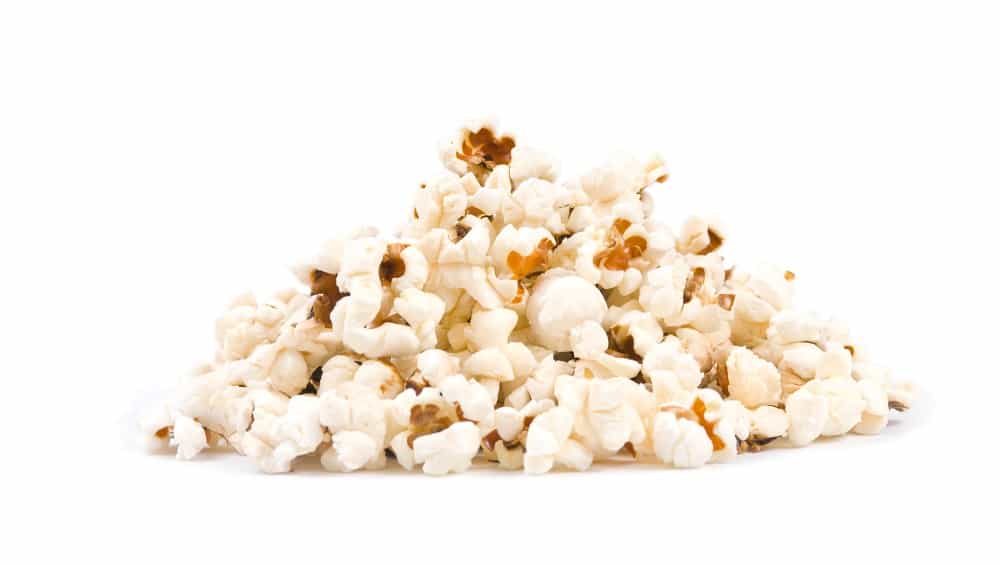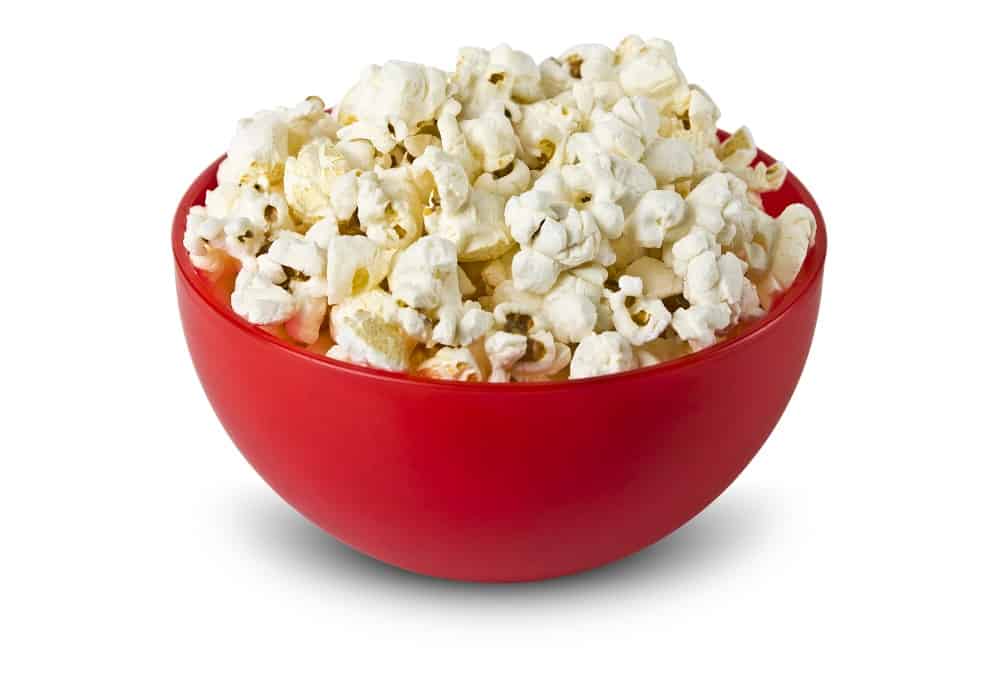Popcorn is one of the most widely eaten snack food in the world. Considered as whole grain, it is also known for its high fiber and nutritious contents (Coco & Vinson, 2019).
Popcorn is generally accepted as safe for pregnant women to eat. It is known for being a healthy alternative to other snacks like potato chips during pregnancy. However, there are limited studies that focused on the safety of consumption of popcorn in particular during pregnancy.
Benefits of Whole Grain Consumption
Decreased Risk of Chronic Diseases
Whole grain consumption has been associated with many health benefits including a reduction in the risk of chronic diseases, such as type 2 diabetes mellitus, coronary heart disease (CHD) and hypertension (Coco & Vinson, 2019). Epidemiological studies have also found links between whole grain intake and protection against cancer and obesity (Slavin, 2004).
Similary, Hu et al. in 2020 examined the relationship between intake of whole grains and risk of developing type 2 diabetes mellitus. More than 158,000 women and 36,000 men participated in the study. Results showed that participants with the highest category for consumption of total whole grain had a 29% reduction in the rate of type 2 diabetes compared with those in the lowest category.
They concluded that increased intake of total whole grains was significantly associated with decreased risk of type 2 diabetes. With popcorn in particular, a non-linear association was found, with the rate of diabetes significantly lower at intake of one serving per week of popcorn but an increased rate of diabetes with one serving of popcorn per day (Hu et al., 2020).
Antioxidants
Whole grains are high in dietary fiber, resistant starch and oligosaccharides. They are also rich in antioxidants including phenolic compounds (Slavin, 2004). Plants have been found to have high content of polyphenols, bioactive compounds that have been proven to show antioxidant activity. Among the different types of whole grains, corn has been found to have the highest total antioxidant activity, followed by wheat, oats and rice (Adom & Liu, 2002).
Other compounds in whole grains that offer health protection include phytate, phyto-estrogens (lignin, plant stanols and sterols), and vitamins and minerals. Published studies have reported that whole grain consumption benefits health with weight loss, blood-lipid improvement and antioxidant protection (Slavin, 2004).
Corn, specifically, is known to contain high amounts of phenolic acids, with ferulic acid being the most predominate (Hung, 2016). The significant difference among popcorn and other maizes (corns) is that the skin (pericarp) of the popcorn is a lot harder, and not as porous, as the skin of other kinds of maize. It is this property which permits the popcorn to pop when heated as the water inside is steamed and the hull bursts (Coco & Vinson, 2019).
The skins of fruits and vegetables are known to have more polyphenols than the fruit inside. Since the pericarp is a great deal denser in popcorn that in other maizes, popcorn ought to contain more significant amounts of polyphenols (Coco & Vinson, 2019).
In addition, the process of popping does not have any significant effect on the phenolic content in popcorn, making it an ideal source of natural grains and polyphenols. Indeed, popcorn eaten plain and air popped is the only food that is a hundred percent whole grain by weight (Coco & Vinson, 2019).
Recommendations
The 2015–2020 Dietary Guidelines for Americans recommends that about half (or 3 oz) of an individual’s daily total grain intake should be from whole grains (Coco & Vinson, 2019). According to a consumption survey by Grandjean et al. in 2008, snacks account for one-third of the total consumption of whole grains. They also found that those who eat popcorn had about 250% higher intake of whole grains and about 22% higher intake of fiber compared to those who do not.
Therefore, it is safe to say that among the different snack foods available, popcorn has the most potential to provide many health benefits as part of a balanced diet. However, it is also important to note that consumption of popcorn is often with added fat and salt, which are ingredients that if eaten excessively could also negatively affect one’s health (Coco & Vinson, 2019).
Potential Risks From Eating Popcorn

Aflatoxins
There are few studies that investigated health risks from eating popcorn in particular. One such study was done in 2020 by Moo et al. It conducted an investigation on the incidence of aflatoxin consumption in popcorn. Aflatoxins are secondary metabolites produced by molds that may contaminate cereals and dry fruits. They cause vomiting, diarrhea, hepatitis, cirrhosis, immunosuppression, and cancers in humans, as well as abortion and teratogenic effects during pregnancy.
One such cereal that is susceptible to aflatoxin contamination is popcorn (Zea mays everta). Hence, the study took random samples of popcorn from 30 places in Mexico were gathered, as well as consumption frequency surveys from 253 participants. They found that aflatoxins were present in 47% of the popcorn samples and therefore pose a considerable risk to consumers (Moo et al., 2020).
Perfluorochemicals
In 2018, the European Commission asked the EFSA Contaminants in the Food Chain Panel (CONTAM Panel) to assess the presence of perfluorooctane sulfonic acid (PFOS) and perfluorooctanoic acid (PFOA) in food and their risk to human health. The CONTAM Panel then established a tolerable weekly intake (TWI) of 13 and 6 nanograms per kilogram body weight per week, for PFOS and PFOA, respectively. However, they also found that general exposure to both exceeds the proposed TWI (Knutsen et al., 2018).
One possible contributor to increased exposure to these chemicals is popcorn. In 2005, Begley et al. found the presence of PFOA in the bag paper of microwave popcorn at concentrations as high as 300 micrograms per kilogram. Then in 2006, Tittlemier et al. reported that the Canadian total diet study found high levels of PFOA in microwave popcorn.
Studies that showed detection of PFAS in cord blood strongly suggests that these compounds can travel through the placenta and reach the developing fetus during pregnancy. Adverse health outcomes have been reported although available data are limited. However, it remains a particular concern as unborn babies have immature immune systems to protect themselves from these exposures (Kingsley et al., 2018).
Eating Popcorn During Pregnancy

According to the Associated Women’s Health Specialists, a pregnant woman’s diet can be broken down into five food groups: grains, fruits, vegetables, protein and dairy. For the grains, pregnant women can choose from bread, cooked rice, cooked pasta, popped popcorn, or whole wheat crackers.
Additionally, the South Warwickshire NHS recommends that foods with lower glycemic index be chosen regularly by pregnant women. The glycemic index (GI) is a measure of how foods are absorbed as glucose into the body.
Foods with lower GI release glucose more slowly and can help prevent excessive weight gain. These include plain popcorn, dark chocolate, plain biscuits, and plain sponge cake, among others.
High GI foods, on the other hand, do not have this property and may cause a sudden increase in blood glucose. These include sweets, doughnuts, iced cake, glucose drinks, any sugar-containing squash or fizzy drinks, among others, and should be consumed less often.
Popcorn can also serve as a high fiber snack that can help with constipation that many pregnant women experience. Just remember to try avoiding the added salt and butter to make it healthier.
Microwave popcorn is best avoided during pregnancy. It is generally high in calories, with high saturated fat and sodium content, and due to the risk of exposure to PFOA. Hence, plain and air popped popcorn is the best choice for pregnant women.
Final Thoughts
Whole grains are part of a balanced diet during pregnancy. They are a source of important nutrients and their intake has been found to decrease the risk of certain chronic diseases, including coronary heart disease, diabetes, hypertension and obesity. They are also well-known for their antioxidant properties, corn and popcorn most especially.
Popcorn is generally safe for pregnant women to consume. It is considered a nutritious snack, and healthier alternative to potato chips or doughnuts. Air popped popcorn is best to avoid the risk of exposure to harmful substances like PFOA.
References
- https://waterburyhospital.org/
- https://www.swft.nhs.uk/
- https://www.practo.com/
- https://www.allaboutwomenmd.com/
- https://www.webmd.com/
- Adom, K. K., & Liu, R. H. (2002). Antioxidant activity of grains. Journal of Agricultural and Food Chemistry 50(21), 6182-6187. doi: 10.1021/jf0205099
- Begley, T. H., White, K., Honigfort, P., Twaroski, M. L., Neches, R., & Walker, R. A. (2005). Perfluorochemicals: Potential sources of and migration from food packaging. Food Additives and Contaminants 22(10), 1023-1031. doi: 10.1080/02652030500183474
- Coco, M., Jr., & Vinson, J. (2019). Analysis of popcorn (Zea Mays L. var. Everta) for antioxidant capacity and total phenolic content. Antioxidants 8(1), 22. doi: 10.3390/antiox8010022
- Grandjean, A., Fulgoni, V., 3rd, Reimers, K., & Agarwal, S. (2008). Popcorn consumption and dietary and physiological parameters of US children and adults: Analysis of the National Health and Nutrition Examination Survey (NHANES) 1999-2002 dietary survey data. Journal of the American Dietetic Association 108(5), 853-856. doi: 10.1016/j.jada.2008.02.018
- Hu, Y., Ding, M., Sampson, L., Willett, W., Manson, J., Wang, M., …, & Sun, Q. (2020). Intake of whole grain foods and risk of type 2 diabetes: Results from three prospective cohort studies. BMJ 370, m2206. doi: 10.1136/bmj.m2206
- Hung, P. V. (2016). Phenolic compounds of cereals and their antioxidant capacity. Critical Reviews in Food Science and Nutrition 56(1), 25-35. doi: 10.1080/10408398.2012.708909
- Kingsley, S., Eliot, M., Kelsey, K., Calafat, A., Ehrlich, S., Lanphear, B., …, & Braun, J. (2018). Variability and predictors of serum perfluoroalkyl substance concentrations during pregnancy and early childhood. Environmental Research 165, 247-257. doi: 10.1016/j.envres.2018.04.033
- Knutsen, K., Alexander, J., Barregard, L., Bignami, M., Bruschweiler, B., Ceccatelli, S., …, & Schwerdtle, T. (2018). Risk to human health related to the presence of perfluorooctane sulfonic acid and perfluorooctanoic acid in food. EFSA Journal 16(12), e05194. doi: 10.2903/j.efsa.2018.5194
- Moo, T., Camarillo, E., Moreno, M., Ortiz, M., Olvera, V., & Cervantes, M. A. (2020). Human health risk associated with the consumption of aflatoxins in popcorn. Rrisk Management and Healthcare Policy 13, 2583-2591. doi: 10.2147/RMHP.S274767
- Slavin J. (2004). Whole grains and human health. Nutrition Research Reviews 17(1), 99-110. doi: 10.1079/NRR200374
- Tittlemier, S., Pepper, K., & Edwards, L. (2006). Concentrations of perfluorooctanesulfonamides in Canadian total diet study composite food samples collected between 1992 and 2004. Journal of Agricultural and Food Chemistry 54(21), 8385-8389. doi: 10.1021/jf061713p




